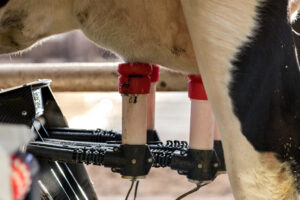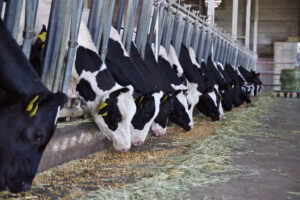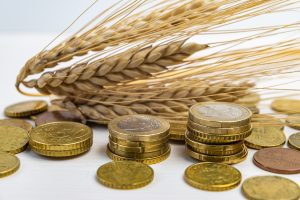Plant extracts have been known since ancient times and are used by human to take care of his health. With the help of roots and herbal decoctions, phytotherapy appeared as a solution to all illnesses when medicines did not yet exist. This alternative medicine was also applied to treat domestic animals. Today, we have an armada of synthetic products to treat us: human and animal. In animal husbandry, plant extracts are always in: an effect of the current fashion? Real effectiveness? Nevertheless, the use of plant extracts is subject to a strict regulatory framework and remains tricky for professionals. So what plant-based solutions are available to breeders and animal feed operators?

What are the different statuses of plant-based products available for animal husbandry?
Today the use of “plant extracts” in animal husbandry is highly regulated, it is not possible to use all plants, nor all their parts (stems, flowers, roots) as they are offered by nature. The use of processed products from plants such as essential oils, oleoresins, hydroalcoholic extracts…cannot be carried out “freely”.
3 main regulatory statuses for herbal products
These 3 regulatory statuses are :
- The medicine
- The raw material
- The additive
Plant extracts can also be provided by premixes and compound feeds, but these are variations of the major families above. The boundaries between the different statuses are not always clear and the use of plants and their extracts in animal husbandry is a complex task which requires the use of informed professionals with a detailed knowledge of the possibilities and restrictions of use and who are perfectly familiar with the applicable regulatory framework. Certain “borderline” products are not easy to classify in a regulatory framework that is narrow for these products with multiple properties.
Herbal medicines:
Within the framework of a veterinary prescription, phytotherapy delivers veterinary medicines that provide one or more plants or plant extracts. They are formulated from plants listed in pharmacopoeia.
Herbal medicines have a marketing authorisation granted prior to their marketing and have therapeutic properties, efficacy and safety that have been evaluated and can in fact be claimed (medicines by function and presentation). We will not go into detail about herbal medicines in this article. We prefer to develop the contributions made via animal feed.
Plant extracts as raw materials for animal feedstuffs
In animal nutrition, feed materials are legally defined under Regulation 767/2009 EC and are “primarily intended to satisfy the nutritional requirements of animals […] and are intended to be used for oral feeding to animals […]”.
There is a positive, but non-exhaustive, list of processes and products leading to the status of feed materials and which can be used as such for the formulation of feedstuffs, which is legislated by Regulation 68/2013 EC.
Certain “plant extracts” fall within this category of raw materials, provided that several cumulative criteria are met. These include, among others, the following ones:
- Nutritional intake
- Obtained by “basic” processes as defined in the regulations
- Strictly nutritional characterisation
- No function claims and strictly nutritional claims
Plant extracts classified as raw material can be set on the market without a safety assessment by a third part Agency. The responsibility for placing on the market is supported by the industry who sales the extract. For example, a spice, consisting of plant extracts ground by a mechanical process such as thyme powder, has raw material status in the regulatory category “Products of the processing of spices and aromatics” and can therefore be marketed without any prior technical and regulatory procedure. They refer to “raw” products.
Plant extracts as additives
Additives and premixes based on plants products are different from raw materials, they are moreover not regulated in the same way and are the subject of a regulation of their own: Regulation 1831/2003 EC. Unlike raw materials, additives provide functionalities to the feed into which they are incorporated and to the animal.
Strict functionality
In the current framework covering additives, plant extracts can be included in two categories and functional groups:
- “Sensory additives” as flavouring substances to increase odour and palatability.
- “Zootechnical additives”, which may have zootechnical functions as digestibility enhancers, gut flora stabilisers or animal welfare agents.
The importance of the characterisation of plant extracts
In order to be able to classify the plant extract and thus meet marketing requirements, it is essential to have a perfect knowledge of the extract used: its manufacturing process, its botanical and analytical characterisation, the identity of the main phytomarkers, their contents and their safety… This scientifically demanding work requires a real expertise of the extract by professionals with botanical, analytical and regulatory knowledge.
What are the classification criteria?
Plant extracts are considered additives when several (but not exhaustive) of these factors are present:
- They are obtained through complex processes, often involving purification.
- They contain several natural “active” substances in the form of “phytomarkers”.
- Standardization is sometimes required to ensure a constant supply of phytomarkers.
- Very low incorporation rates due to a high concentration of “active” substance
Complex and tedious market access
Plant extracts with additive status cannot be placed on the market without an individual authorisation issued by the European Commission, after their safety and efficacy have been assessed by the European Food Safety Agency (EFSA). Placing a plant extract on the market as an additive usually takes several years. From an administrative point of view, an authorisation dossier must be drawn up and submitted to the European authority, and must be evaluated by the EFSA before a legal authorisation can be granted by European Commission and European Members States. From a technical point of view, the analytical characterisation of the extract is generally a complex task, as is the evaluation of the safety of use on the target animal species at the content of interest or the evaluation of the safety for the worker and final consumer. This work requires the applicant to have a detailed and very in-depth knowledge of the extract of interest and an overview of its metabolism in animals.
Plants “additives” or plants “raw materials” – sometimes a very thin border
While the definition of a plant-based veterinary medicinal product seems relatively clear, the classification of plant extracts in the right regulatory category: either additive or raw material is paradoxically often complex for animal feed professionals. Some products, in grey area are sometimes difficult to classify exactly in the right category, opening the door to uncertainties when products are set on the market.
Nevertheless, this classification remains fundamental to enable the plant extract of interest to be used and used with serenity, since the rules of market access are not the same in each case.
What is the future for plant extracts and plant products?
The regulatory framework for additives: an obstacle to the valorisation of plant extracts?
The regulatory framework for additives: an obstacle to the valorisation of plant extracts?
The current regulatory framework is leading to the gradual disappearance of the number of plant extracts with “additive” regulatory status: few professionals in the additive industry defend complex plant-based extracts. Market access costs remain high for these products (difficulties to fully characterise the product, difficulties in the safety assessment), with no return on investment for professionals (non-holder specific authorisations not linked to the applicant). Moreover, one of the major issues for herbal products is claims. Ingested single plant extracts are mainly authorised as sensory additives. These can only claim sensory functionalities.
The consequences of a framework that is a little too rigid…
This limiting framework has therefore favoured the disappearance from the market of many standardised plant-based products. In the end, few concentrated plant extracts will be able to remain on the European market for ingested use, whereas paradoxically, solutions based on plant extracts may be main candidates for meeting the health and societal challenges facing livestock farms. Combining both efficiency and a “healthier” image, these are innovative and alternative responses that should continue to be developed.
A new regulatory framework with new perspectives?
Regulation 1831/2003 EC, the current regulatory framework for additives, was drawn up in the early 2000s. Its aim was to foster innovation. Today, it restricts plant-based products to flavouring functionalities or zootechnical performance. Twenty years later, the improvement of animal performance in animal husbandry is no longer an innovation but an achievement. As for sensory functionality for plants, it is not sufficient to cover plant-based products with innovative functionalities other than flavouring functions.
What about plant extracts that can provide functionalities other than sensory or zootechnical?
The current regulatory framework does not provide for this option. While innovation now focuses on products that meet market needs, such as demedication or reduction of antibiotic resistance.
The regulatory framework has not kept pace with the needs of the animal nutrition sector.
The European Commission is currently working on the readjustment project aimed at adapting the Additives Framework Regulation (EU) 1831/2003 to bring it more in line with societal expectations. This ambitious project will hopefully find the right place for plant-based additives and promote innovation.





